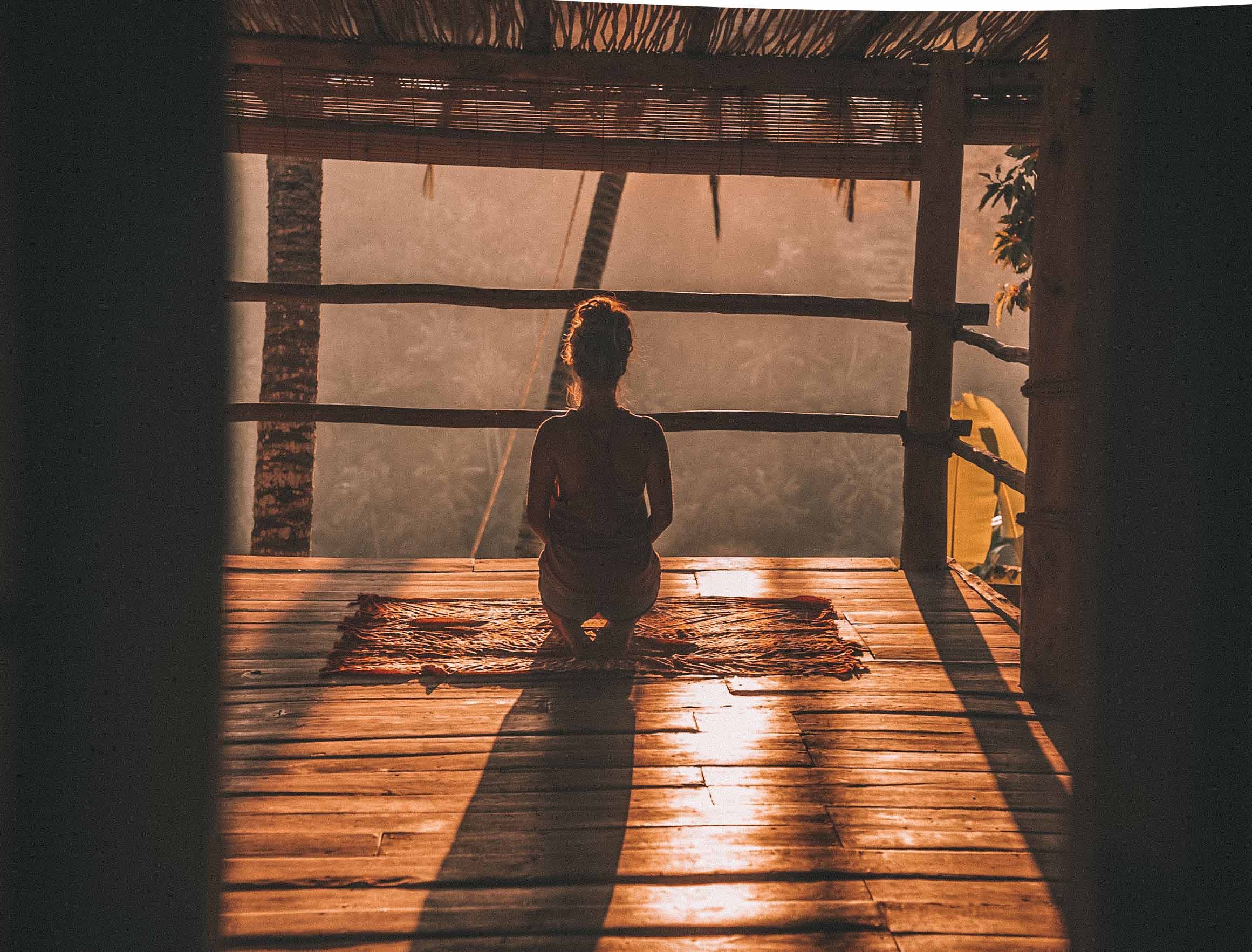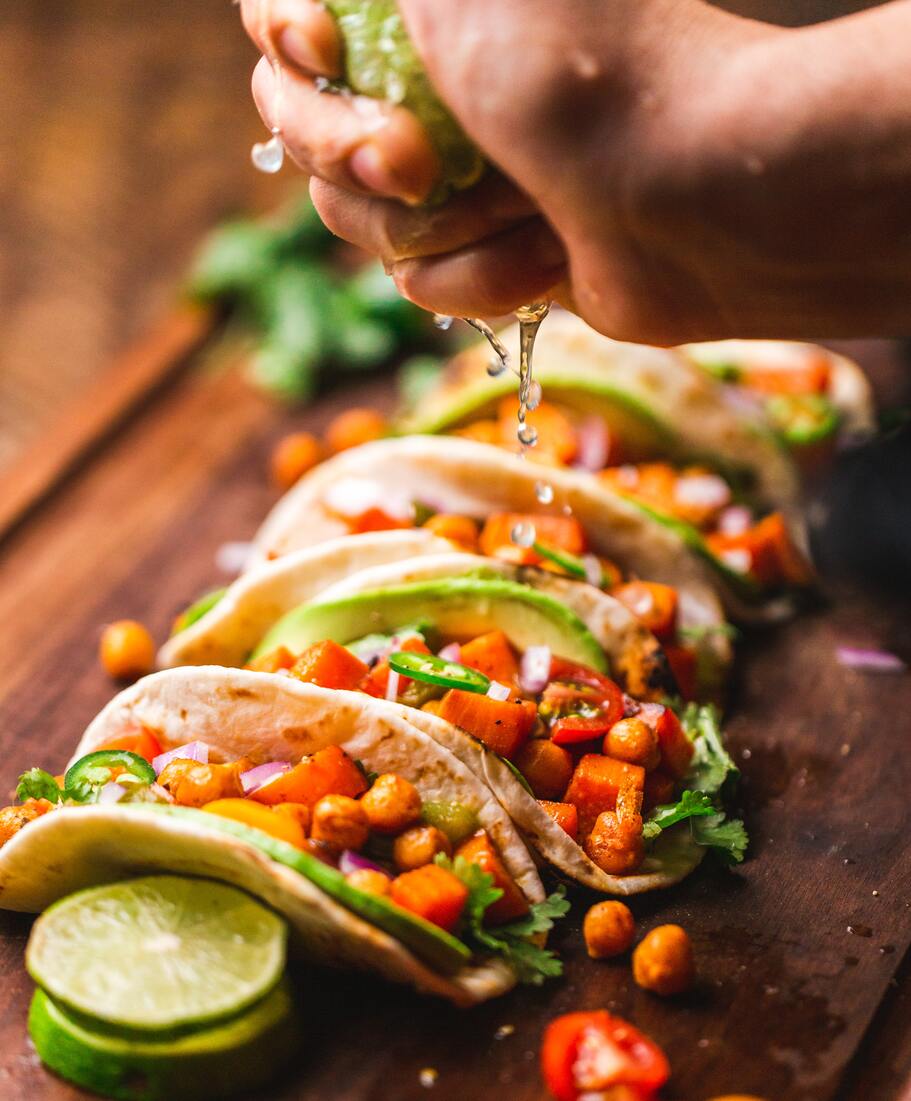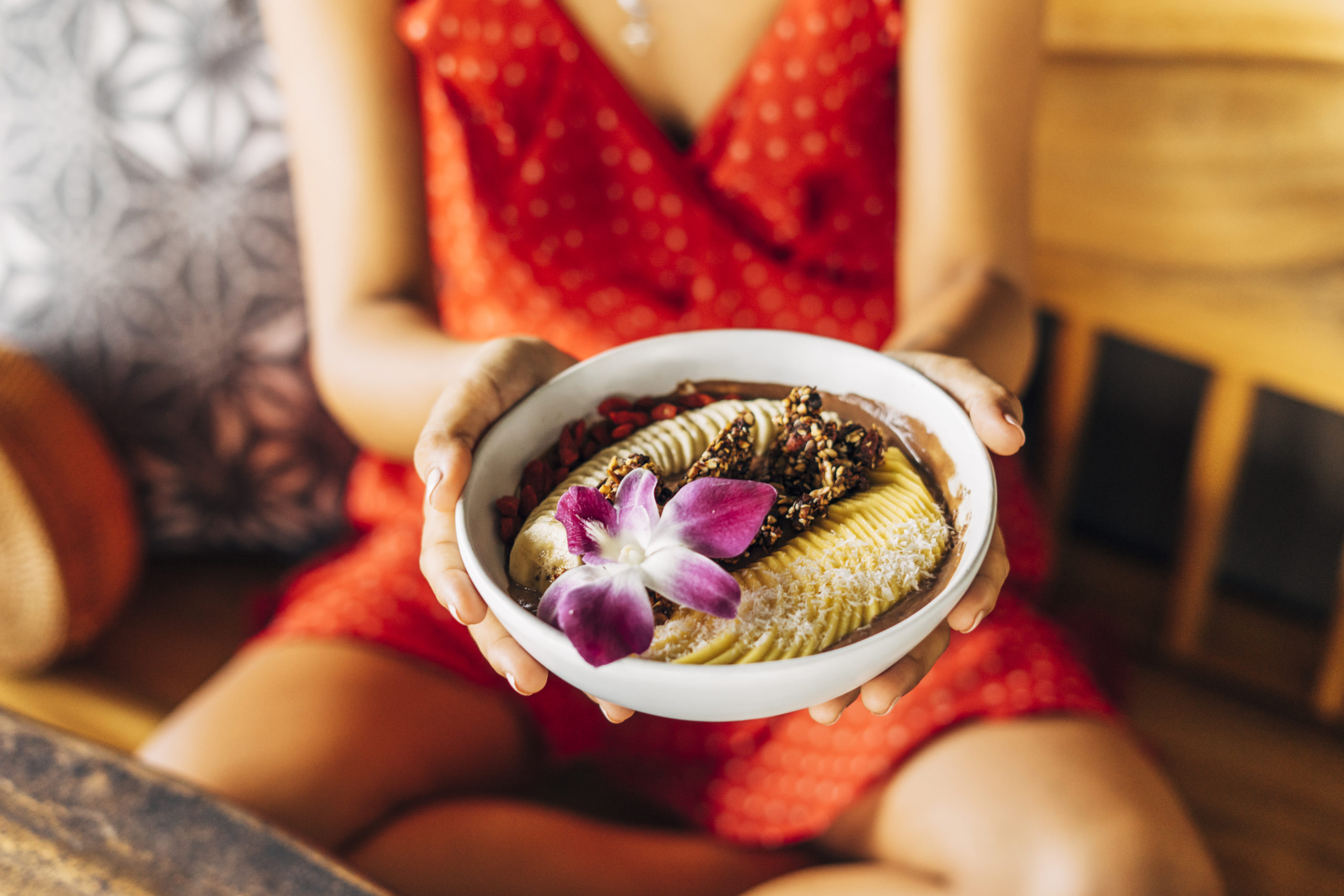MENU
OPEN SIDEBAR >
Vipassana is often known as insight meditation, translated to mean, “to see things as they really are.” It is a traditional Buddhist meditation practice, an ancient system of training your mind, a set of exercises dedicated to becoming more and more aware of your own life experience.
The technique itself appears simple but mastery of the mind and one pointed concentration is not for the faint hearted. It takes effort and work. The actual vipassana focuses on awareness of your breath, observing the breath passing in and out through the nose. After a few days of observing the breath, you start to observe sensations in the body. This is much harder than it seems. There are the obvious sensations you will feel being seated in a meditation position for long periods of time, your foot turns to pins and needles or maybe your back starts to ache. What you want to start observing are the more delicate sensations, this is what increases concentration and awareness.
Depending on your age, our bodies on average are made up of 70% water. Water is in a constant state of vibration which means our bodies are in a constant state of vibration. The frequency of all vibrations will vary depending on a number of different factors. Vipassana teaches us to tune into these frequencies that modern day life has pulled us so far away from. It teaches us to observe sensation without labeling it but simply noticing that there is sensation in the present moment.
Vipassana teaches you to label thoughts and experiences as they arise, taking mental notes as you identify objects that grab your attention. Each time you identify a thought in your mind, you are then encouraged to bring your awareness back to your breath or sensations in the body. The idea is to not entertain our thoughts but observe and let them pass.
There are several different types of vipassana meditation that have evolved from the traditional style over the years. In modern day, to successfully experience this type of meditation, you will need to stay at a certified vipassana center or ashram for a minimum of seven days in silence. Here you are led by a swami or monk who guides you through the core teachings by Buddha and practices that will get you further along on your path to enlightenment or spiritual awakening.
A typical day in a traditional meditation center involves; waking up at 4:30am, eating only two light meals per day, walking and sitting in nature, seated silent meditations, daily dharma talks and lectures, lights out early, a vow of silence and no access to mobile devices or internet whatsoever.
The at home experience I am sharing with you does not replace the traditional experience. This home experience can serve as a mini preview into the traditional style. I have not had the opportunity to experience the traditional version but I hope to in the near future. Even at home, if you follow the technique, you can still gain benefits and insight in only four days. Remember the purpose is to go inward and in order to truly be able to do that you need to block out stimulation and distractions from the outside external world. It will not work if you do not do that.
The intention is to bring awareness from the physical or gross body to the subtle body and connect with yourself, the universe, pure consciousness. At the same time do not have hopes of a magical unicorn or long for a celestial blissful moment, simply observe the breath and let the process unfold without expectations. Do not try to incorporate any other meditation techniques, no visualization, nothing with chakras or pranayama (breath control). Those techniques are not part of vipassana, save them for a different time and fully commit to vipassana if you choose to give it a go.
At Home Vipassana Guidelines:
Vow of silence
No speaking to anyone whatsoever for four days. For me this wasn’t hard at all. If you’re more of an extrovert it might be hard but this is necessary in the process in order to experience the benefits of the technique.
Meditation
I chose to do four, sixty minute sessions of silent vipassana style meditation per day. I used a cushion under my yoga mat. Ideally you want to move as little as possible which is very hard to do! Normally, I’ll do a 15-20 minute meditation per day so 60 minutes was a big change for me but it’s possible I promise. I changed positions a lot and then gradually over time you will notice you’re able to be in a position longer and longer and move less and less. Don’t get hung up on this and do the best you can. If you need to lean against the wall at some point it’s ok and not a deal breaker but try to be as authentic as possible to the process. Sitting still has a direct correlation to creating stillness of the mind.
No Mobile Devices
I told certain people the day before what I was doing so no one would worry or expect a reply. I explained that I will not be replying to any messages unless it’s an emergency situation (we are in the middle of a pandemic). I checked my phone once mid morning and then again in the early evening. I messaged my partner at set times so he knew I was ok and he did the same. Keep in mind the messages were literally only ‘good morning’ and ‘goodnight’.
No Internet
The only time I used the internet was one time per day, for an hour in the evening to watch the dharma talks on Youtube. Dharma talks are the buddhist teachings taught by a swami or monk that were previously recorded from live sessions at a meditation center. These were very beneficial in helping me understand the technique and the why behind it all as well as learn more about the Buddhist religion.
Only Light Food
I did a light fast during my four days and I ate only cold pressed juices, smoothies, solid fruits, solid vegetables, homemade hummus and nut butter. I kept it very simple and enjoyed the process of preparing each item with great care and observation. I chewed more and ate slower. Since I was on a light fast, I also did an at home enema for two of the days.
Sleeping Hours
I woke up at 6am on the first day and as early as 5am on the last two days. I was in bed between 7:30-8:00pm to watch the daily dharma talk and then lights out by 9pm. I took a nap everyday for approximately an hour.
Physical Activity
Usually only slow walking meditations are allowed and occasionally light yoga. I did an hour long walk each morning and a yin yoga session every afternoon. Keep in mind you want to stay as close to this meditative state as possible even when you are not in an actual seated meditation. So no hard fast movements and always remember to observe and be aware of the present moment as much as possible. Try not to use music and if you do choose music without words.
Journaling
In traditional vipassana this isn’t encouraged but most people do bring in little notebooks and jot things down here and there. For me it felt like a great detoxification tool of bringing awareness to my attachments and being able to let them go or at least understand what I’m holding onto. By holding onto these attachments I am only adding misery to my life. Accepting impermanence is key and is a big part of the process.
Reading
I read “The Experience of Insight” by Joseph Goldstein. It’s about a vipassana experience and all the Buddhist teachings. Everything is very digestible and clear and he provides great examples and questions from real life. It complimented the nightly dharma talks.
Cleaning
A clean space is essential when you’re decluttering the mind. Decluttering your surroundings will only help the process. My place is usually pretty clean but the first day when my thoughts were racing the most I did some additional cleaning. Throughout the four days, making my bed in a calm relaxed manner and doing the dishes right after they were used was surprisingly therapeutic and gave me a sense of contentment.
Resources Used
Goenka originally from Burma was a businessman that found vipassana later in life because of debilitating migraines. After his initial experience he began a fourteen year training under his master teacher and then opened his first meditation center in the 70’s. In his lifetime, he trained about 1300 assistant teachers to conduct courses using his recordings, and about 120,000 people attend them each year. Upon Goenka’s death, Jack Kornfield, noted American author on Buddhism wrote, “In every generation, there are a few visionary and profound masters who hold high the lamp of the Dharma to illuminate the world. Like the Dalai Lama and Thich Nhat Hanh, Ven. S.N. Goenka was one of the great world masters of our time. He was an inspiration and teacher for Joseph Goldstein and Sharon Salzberg, Ram Dass, Daniel Goleman, and many other western spiritual leaders. Recordings of his dharma talks are available to us today on YouTube.
My Overall Experience
I experienced many moments of awareness and insight that brought me clarity and understanding and some moments that still leave me stuck in emotion and attachment. There were several AHA moments and yet still some unresolved things. I understand the misery of attachment much more and being aware of it in every moment is very very challenging to do.
Not only are everyday situations influencing our attachments, there are many unconscious conditioned attachments from our childhood and society that weigh heavily into everything we do. It’s too much to put everything into words in a short blog article, if you’re interested in more give it a go, see what unfolds or schedule a call with me.
I will leave you with one of my biggest takeaways though which is the concept of ‘walk the path’. We are living in a world of information overload and we have the power to attain knowledge on pretty much anything at any time thanks to the world wide web. We’re continuously acquiring new knowledge yet oftentimes we end up doing nothing with the understanding and application of this knowledge. For example, how good is a self help book if you don’t try any of the techniques out in it?
We are learning new things everyday but do we take the time to experience it? There is no way I could write you this article from reading a book on vipassana, I had to experience it. And it continues, my experience goes beyond those four days. From that single four day experience, there are techniques I now apply in my daily life to keep me on my path. A path that aligns with self realization and awareness. In order for this to happen I have to ‘walk the path’ and this takes continuous action and effort.
I do believe that given our current situation with Covid-19 and social distancing, it’s given me the gift of time post vipassana to soak up the benefits more and keep parts of the practices going. I’m now four weeks post vipassana and the moments of clarity continue to unfold. I’m able to notice my behavior patterns and attachments and pause, question, redirect or react differently. It’s an amazing thing to experience. If you’re interested please reach out and I can help you get going!



+ Show Comments
- HIDE COMMENTS